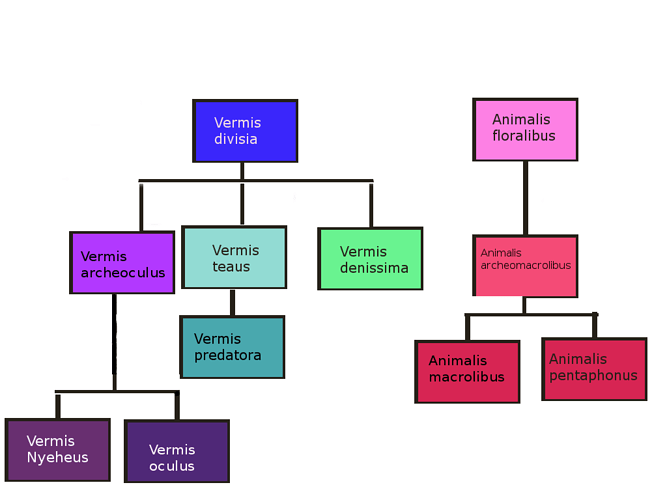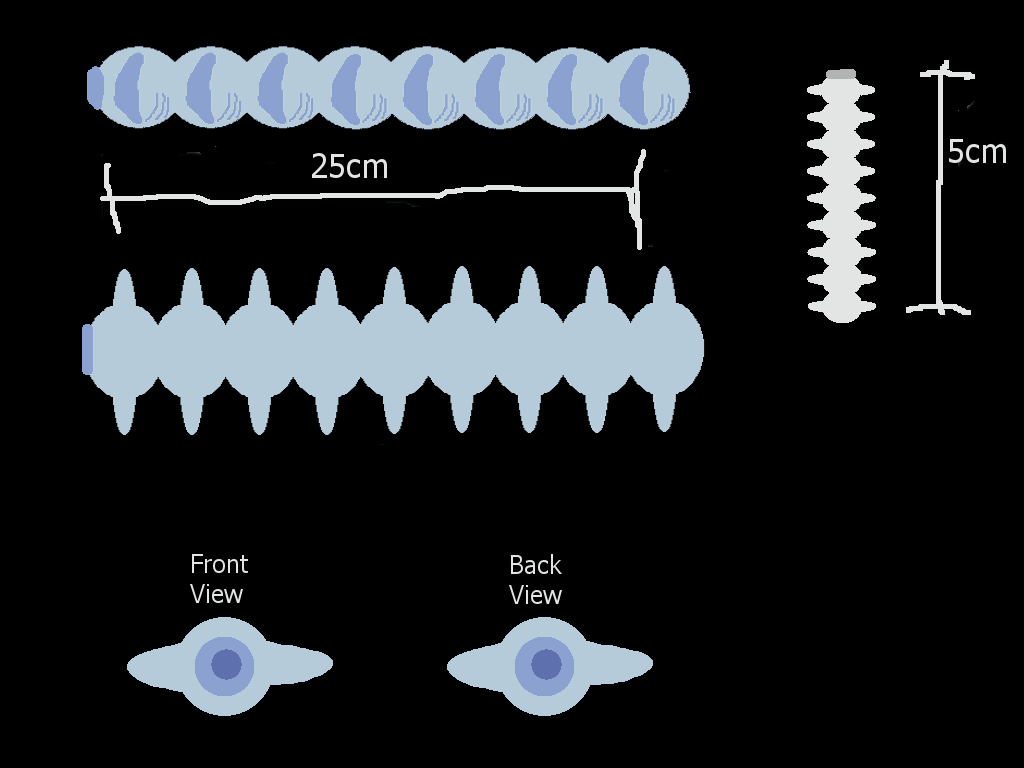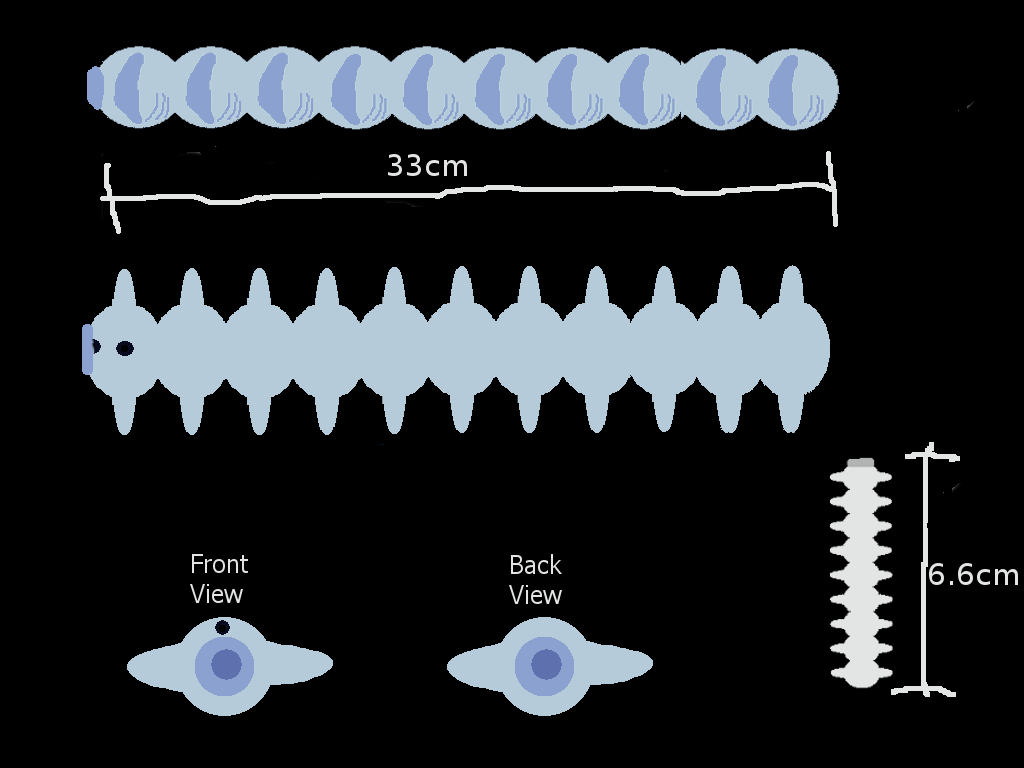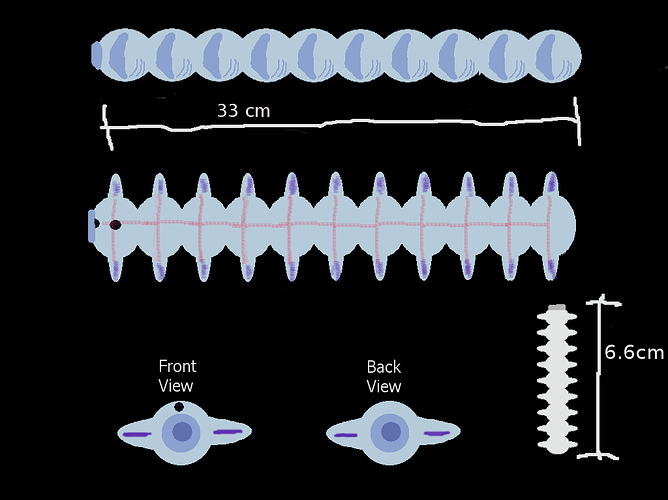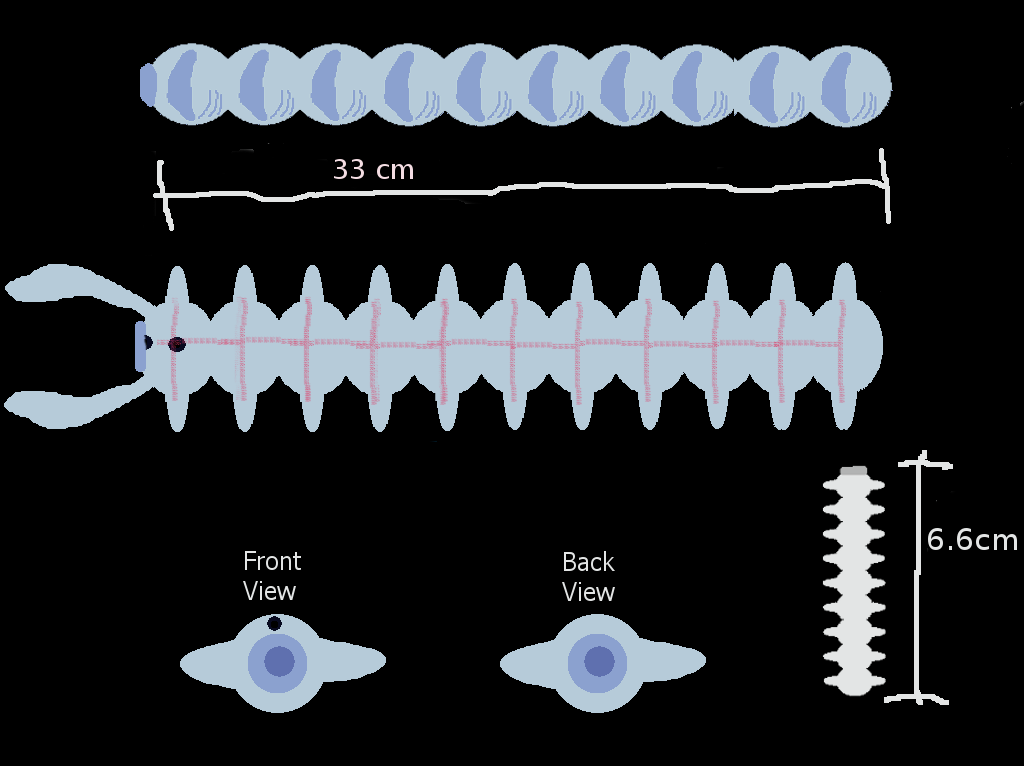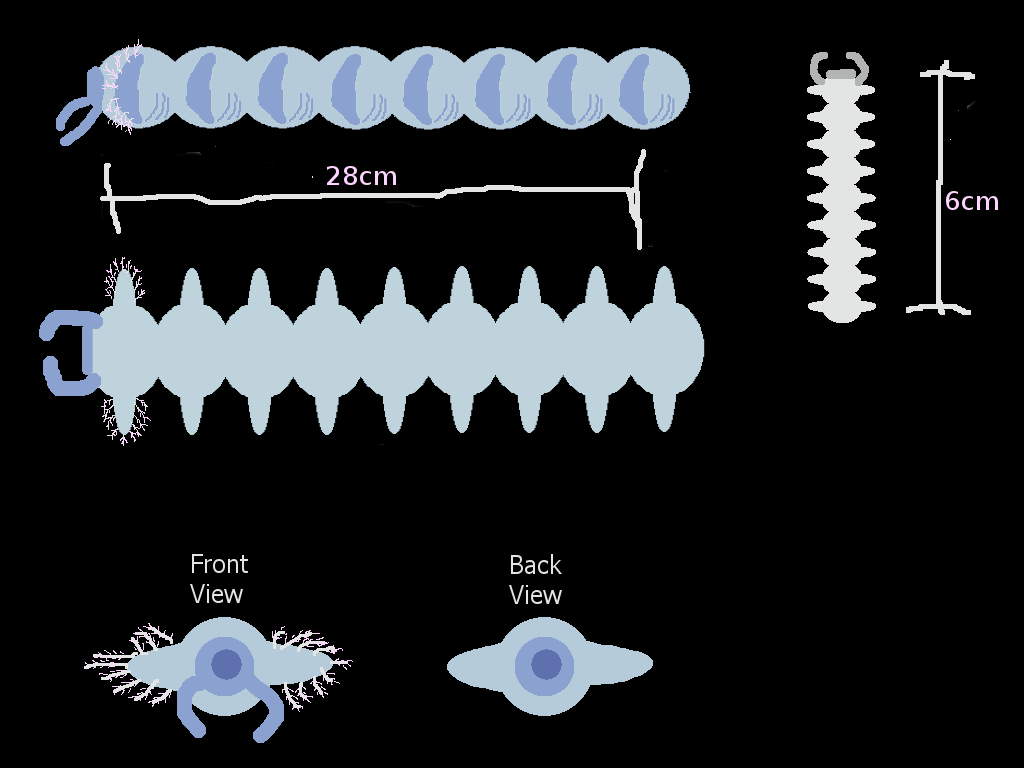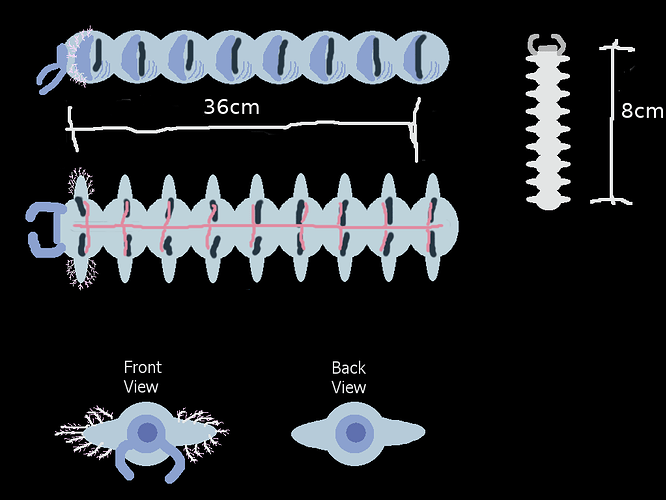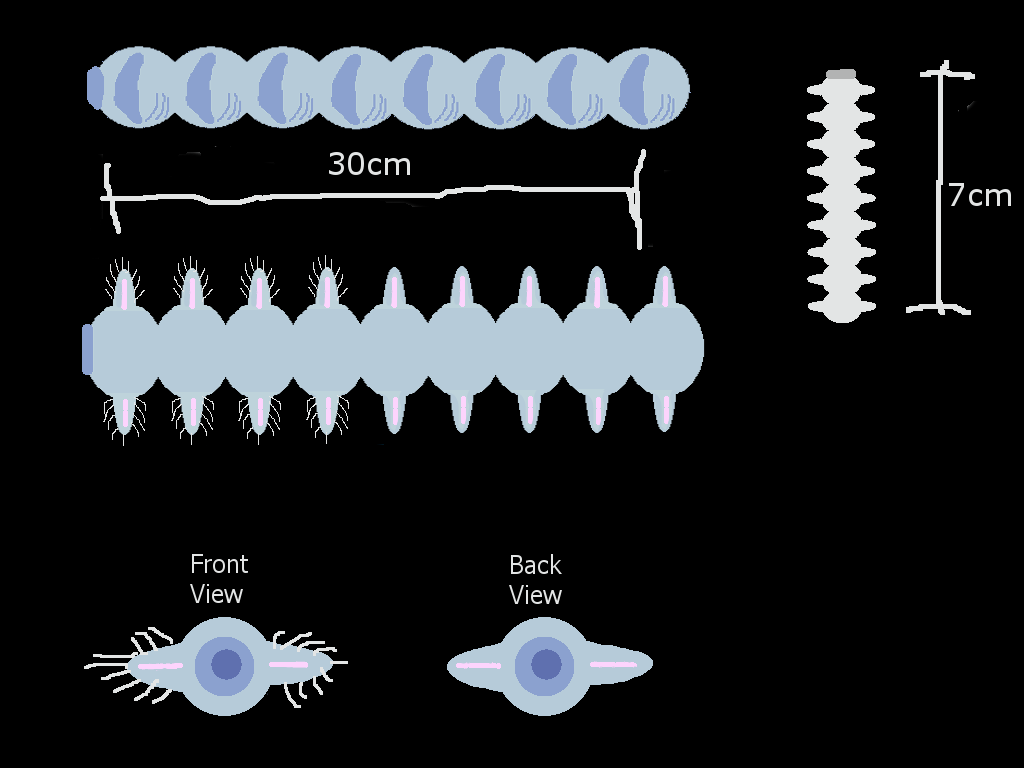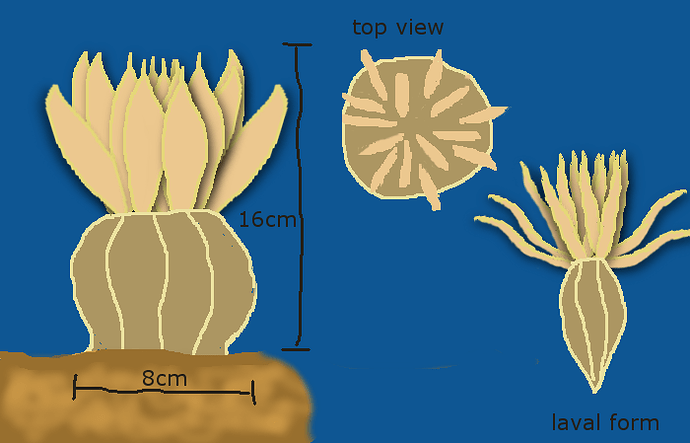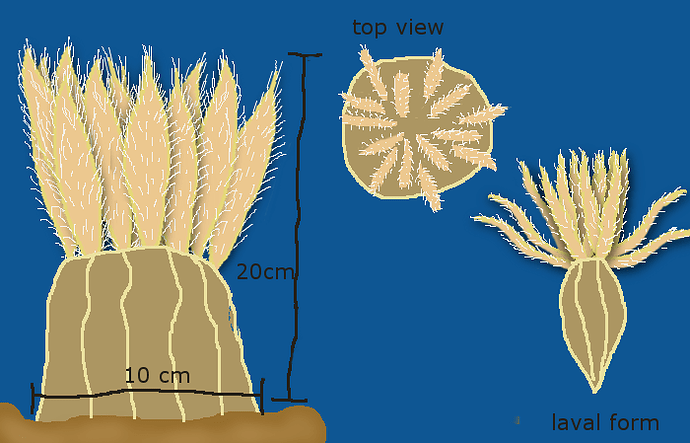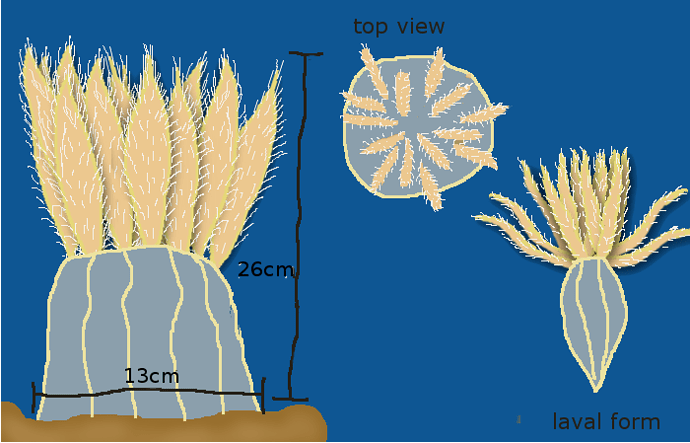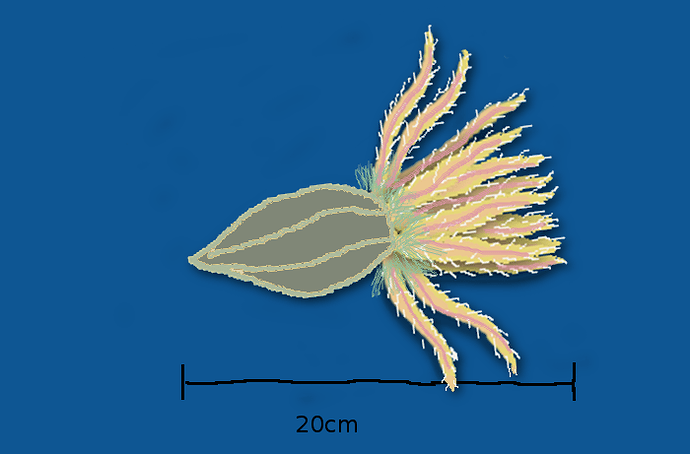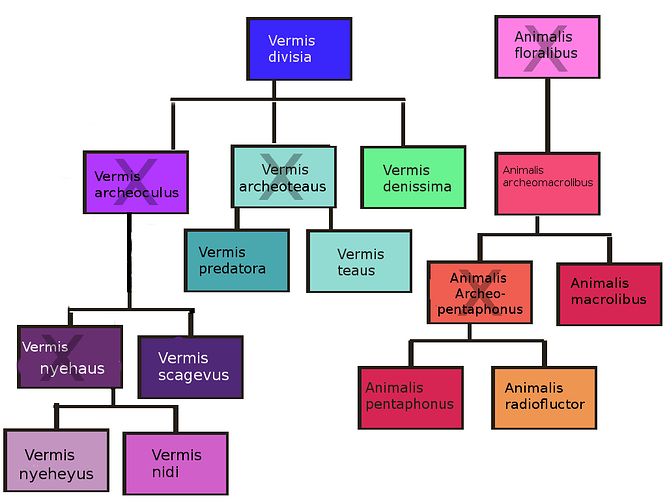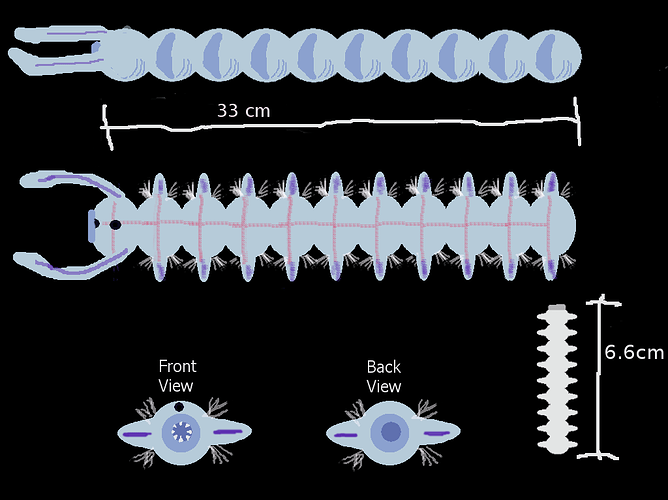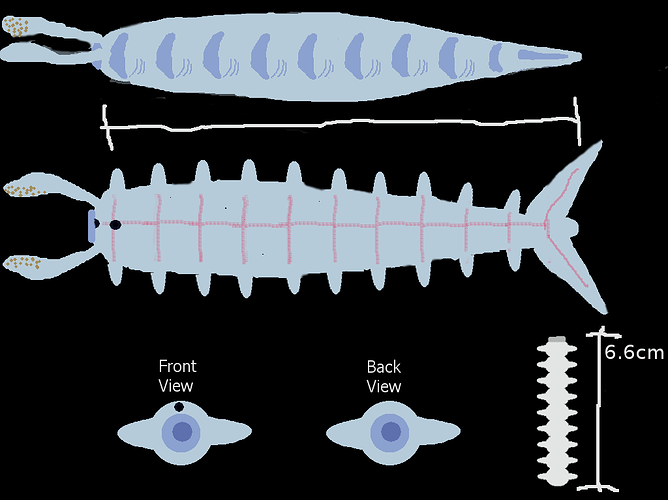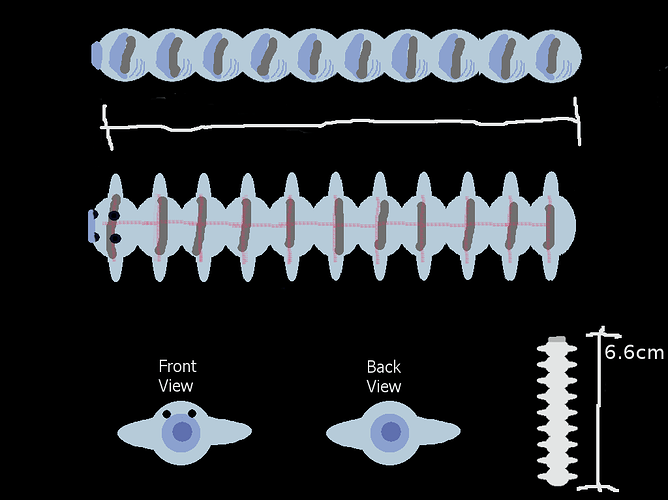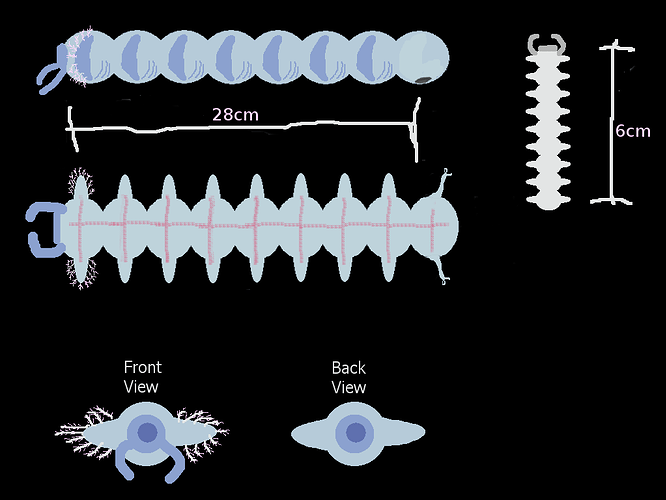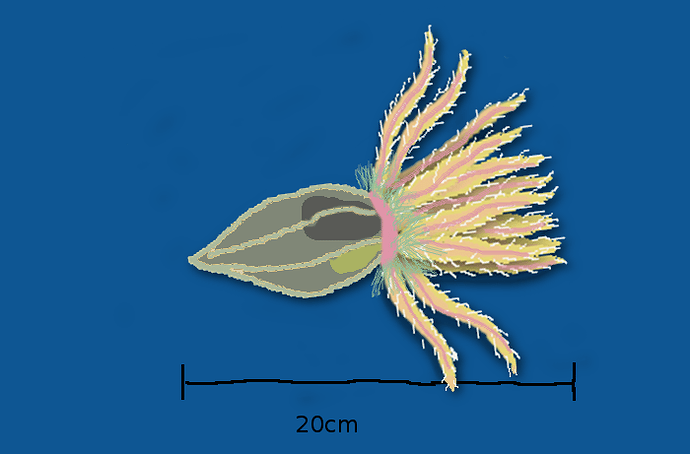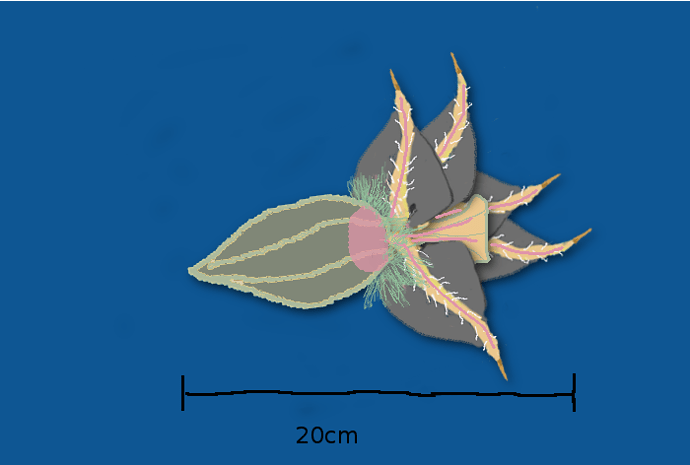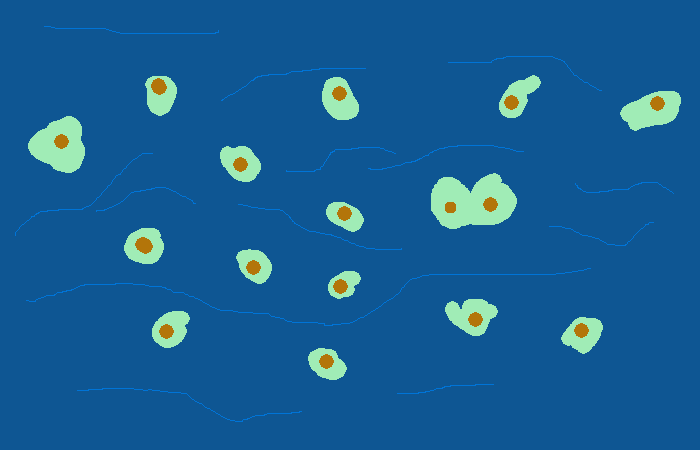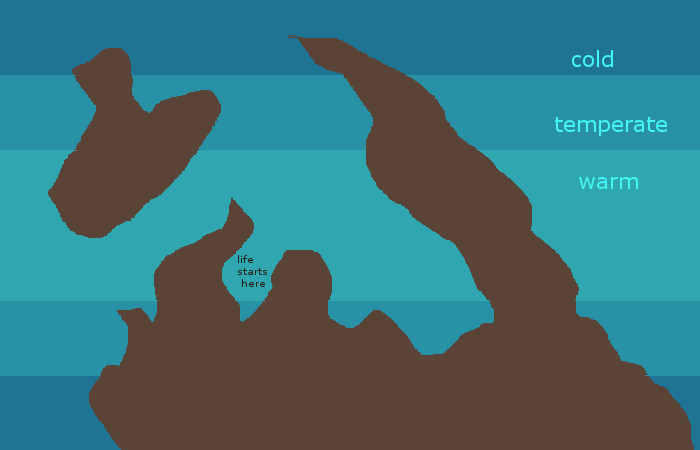@OoferDoofer are you gonna join us this turn?
We are just finalising the next turn, though we still haven’t had a turn from @OoferDoofer but should be out soon.
Oh, sorry, I forgot about this. I will put my vote up soon.
Vermis oculus gains nerves and cartilage fins
Could I join the next round?
Yes of course the results of this round will be out this weekend and then please do join in.
sorry life got in the way we will be posting the next turn shortly.
Round 3
Sorry to be so slow we have had a lot of family stuff going on in recent weeks we will try and get back on track for future turns. For now we will aim to do one turn every 2 weeks until things settle a bit.
Creatures
Evolution tree
whenever there is a two or more split from a species we will change its name to Archeo(oldname) as otherwise, the tree makes no sense…
Vermis oculus
Evolved from Vermis archeoculus
Has developed a simple nervous system and cartilage fins.
Due to its better manoeuvrability, it is able to catch prey well but has difficulty eating any of the larger Vermis.
Vermis nyehaus
Evolved from Vermis archeoculus
developed grabby limbs and a simple nervous system.
does well on as it is able to hold onto prey but has no mechanism to break larger prey into smaller pieces.
Vermis teaus
starting to struggle as it is smaller than most Vermis now and can’t compete on speed and manoeuvrability
Vermis predatora
evolved from Vermis teaus .
Simple nervous system, gets bigger
Develops basic endoskeleton is currently 2 semi-circles of cartilage in each tagma supporting the fins and the gills, having developed out of the gill support cartilage.
Doing well as on the larger size, has ability to grab prey and move well. The simple digestive system is starting to limit it, however.
Animalis macrolibus
capable of living in deeper, colder waters
Larger
evolves broadcast spawning
gains a cartilaginous tube around its body (for structure, there’s no predation pressure yet).
Doing well, eating marine snow when deeper.
Plants
Vegrandis Viriditas
Levels decreasing due to predation.
Mucus oceanum
Spreading rapidly due to lack of predation covering massive areas of the warm and temperate seas and shallows starting to block light and oxygen.
Enviroment
Warm shallows quite crowded, lots of larva in the warm open ocean and small amounts of life in the deeper open ocean feeding on marine snow but quite a lot of detritus developing on the ocean floor.
Light and oxygen levels decreasing due to rafts of Mucus oceanum covering large swathes of the surface of the water in the warm and temperate shallows, warm and temperate open ocean.
levels of Vegrandis Viriditas plankton are decreasing.
Notes
One behaviour change a turn for free from now on.
When more than one evolution comes off an organism they will become archeo(oldname) unless the original owner wishes to give them an alternate name. They will not automatically become extinct but obviously they will often have more competition and be more likely to go extinct.
Pink lines on drawings symbolise nerves
forgot to tag you all
@Smog @TeaKing @Pentaphon @OoferDoofer @BurgeonBlas
Animalis pentaphonus evolves into Animalis radiofluctor
They have gained a brain, cartilage fins at the outer 5 tentacles, spines at the end the tentacles, and have fused the inner tentacles into a tubular feeding organ
They have also become micropredatory
Vermis oculus gains teeth and feeding appendages.
It also gains general seta. Now vermis oculus is vermis scagevus
Vermis Scavegus is mainly a scavenger, but it can hunt
Teaus
some teaus evolve nerves, their back tagmas become gonopods, and they evolve internal fertilization
they also start eating mucus Oceanus, and nothing else but it
predatora
perdatora evolves a brain, photosensitive spots, and teeth, it also eats all creatures except teaus
you have 3 evolutions, along with a free behavioral evolution
Animalis Pentaphonus evolves a blind gut at the center of its tentacles for digesting food, moves into colder seas, evolves a ring-shaped central ganglia around its tentacles for coordinating itself, and evolves an organ at its base to facilitate proper internal fertilization. Behaviorally, it now moves to shallow waters to lay eggs.
@OoferDoofer Just checking, we are assuming the front two fins become feeding appendages and it develops general seta on all other fins, if you want something different that’s fine just tell us.
@Smog we haven’t had a turn from you are you able to do one quickly, please.
Apologies, here it is:
The Nyehaus “bloodline” splits into two:
V. Nyeheyus’ grabbing appendages grow rasping ends, which allow it to rip up flesh into smaller bits for eating. (1 mutation) It also develops a more torpedo-esque shape (mutation 2) and it’s rear fins elongate and strengthen (mutation 3, unless elongate and strengthen are not allowed in the same one). V. Nyeheyus now swims in small shoals with greatly variable sizes, from 8 to 800. (behavioral change)
V. Nidi grows a mutation in each of it’s tagma, a torus-shape within each of the segments made of cartilage and existing below the nerves. (mutation 1) It’s eyes duplicate and are symmetrical to the main nerve of the creature (mutation 2) and strengthen, allowing them to see prey farther off (mutation 3). V. Nidi become somewhat like ambush predators, waiting underneath their prospective prey, then moving up and grabbing for them. (behavioral change)
I hope this is good!
Round 4
Creatures
Vermis divisia
Because the decrease of filter feeders Vermis divisa numbers have stayed reasonably stable even with the number of predators around. They form the second layer of the food web forming a large portion of the food for the smaller predators.
Vermis scagevus
Vermis scagevus evolves from Vermis oculus
gaining teeth and general seta.
also feeding appendages, which as you didn’t say otherwise we have assumed develop from the first set of fins and means they have a very simple cartilage structure in them.
Vermis Scavegus is mainly a scavenger, but it can hunt.
1 extra evo point
Vermis nyeheyus
Front limbs gain rasping ends. The body develops a more torpedo-like shape, this means the individual tagma are less obvious and while they could still develop independently they are heading towards fusing into one segment.
Longer rear fins help movement and they are somewhat stronger though they will need to develop muscles or other structure to use them more efficiently. The last two tagma lose their gills as the larger fin takes up the extra space along with the slimming of the overall shape. They are faster than pretty much anything in the sea currently.
Now swimming in shoals as preditors there is an upper limit to allow effective hunting so the larger end of the shoal size is rare.
1 extra evo point
Vermis nidi
Develops a simple endoskeleton made of rings of cartilage in each tagma. Photosensitive spots duplicated symmetrically and develop more sensitivity, seeing farther.
Developing ambush predator behaviour spending much of the time in the lower areas of the warm shallows.
** farther adaptation on hiding, colour and quick bursts of power would improve hunting capabilities **
Vermis teaus
Develops gonopods, internal fertilization and a basic nervous system.
As they have started only eating Mucus oceanus they spend much of their life in and around the moss rafts which protects them from predators.
1 extra evo point
*** Can I just say I now know a lot more about millipedes and their ability to morph body parts after looking for gonopods to add them here !***
Vermis predatora
Evolves brain and photosensitive spots as well as teeth.
Full predator hunting everything except Teaus (and itself ?), it is currently the largest creature in the ocean, though not by much. Brain and photosensitive spots formidable predator though not as fast as nyehaus .
1 extra evo point
Vermis denissima
Has not evolved in some time and is now under serious threat due to increase predation.
Plants
Mucus imum
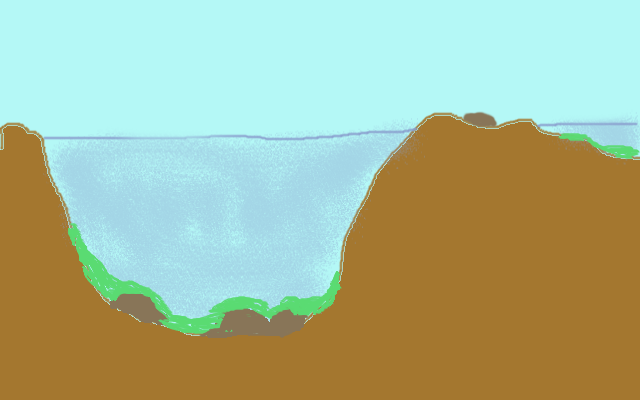
In the tidal zone mats of moss start to form on the rocks and ocean floor in the more permanently water-covered areas, like rockpools and so forth. Not large enough to sustain much life yet.
Enviroment
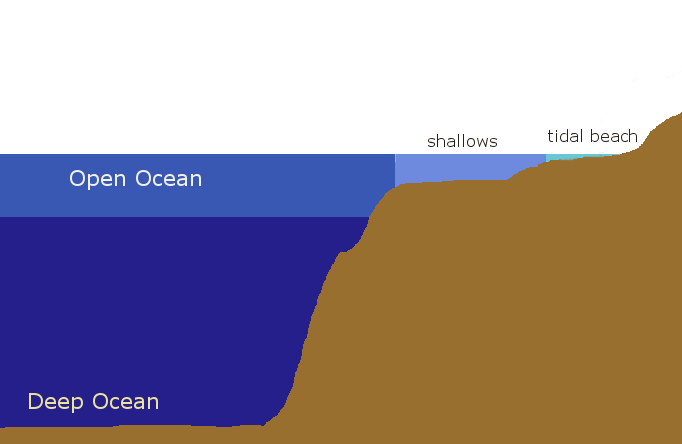
Warm shallows quite crowded, lots of larva in the warm open ocean and small amounts of life in the deeper open ocean feeding on marine snow but quite a lot of detritus developing on the ocean floor.
Light and oxygen levels still decreasing in temperate oceans due to rafts of Mucus oceanum covering large swathes of the surface of the water but stabilising somewhat in the warm oceans due to more consumption.
Notes:
Some creatures have gone extinct, they are marked with crosses, this includes so previous forms where they have had more than one descendant and/or name changes, in most cases these previous forms go extinct when the newer forms evolve but occasionally they stay around in their previous form.
There is now a wider variety of plankton species due to some creatures staying in laval forms their entire lives.
oh wait, my apologies, sorry if i didn’t specify: V. Nyehaus splits into V. Nyeheyus and V. Nidi, and V. Nyehaus still remains it’s original creature. if you could fix that, it’d be great, but no need to! Either way works w/ me!
Opps didnt spot the name change, yes will fix that.
A. radiofluctor gain a cartilaginous skeleton, vibration-detecting setae in 5 rows around the outside of the feeding organ, breathing setae amongst the smelling setae, and spines inside the feeding organ. Behaviourally, it will now use the inner spines to rip up swallowed prey without losing as much of its fluid
Animalis ixodi also branches from A. radiofluctor, and turns the fins into grasping claws, loses the non-limb part of the body, shrinks to around 1-2cm across, and splits the feeding organ into multiple tentacles. Behaviourally, it is now ectoparasitic and lives embedded in the host’s skin
Vermis Scagevus will evolve breathing seta, eating seta, and spines. (the eating seta are in the front of its body, the breathing seta are located in the front-middle, and the spines are located in the middle-back and back.) It will also undergo tagmosis and the three different seta areas will split.
